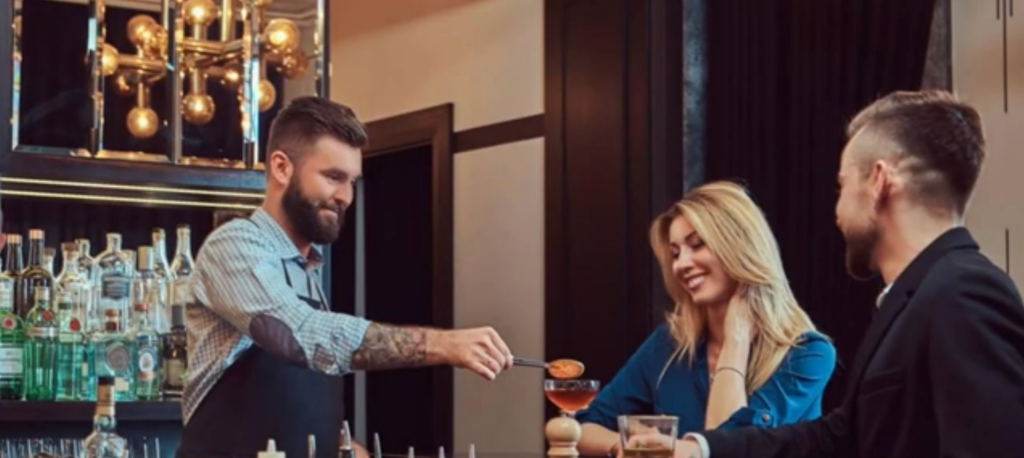Revamping Strategies for Profitability in a High-End Hotel Lobby

I am the manager of a high-end hotel lobby. Situated adjacent to the high-speed train station and surrounded by numerous office buildings, we experience a significant flow of people. However, the challenge we face lies in the varying quality of our clientele. They tend to opt for inexpensive tea rather than showing interest in premium foreign liquors and wines. Even with several low-priced products introduced as attractants, guests continue to prefer the cheapest options and seldom inquire about slightly higher-priced items. This situation hinders our ability to elevate the level of spending and compare favorably with high-end hotels in the city center. We have attempted bundled sales, offered room vouchers, provided discounts to guests, and engaged in discussions about the culture of beverages. Unfortunately, the impact has been minimal. What should we do?
Step One: Identifying the Core Issue – Profit is the Objective, Selling Red Wine is a Means
At first glance, the issue seems to be the low conversion rate of effective traffic post-attraction, which fails to generate revenue. But is this the real problem?
To address the question of what to do next, it’s crucial to return to the root of the problem. Essentially, the issue at hand is how to increase the lobby bar’s profitability. The proposed solution has primarily focused on achieving high profits through the sale of imported wines.
Why is this approach suggested?
Let’s analyze the main target clientele of the lobby bar:
Travelers transiting via the high-speed train, who are likely just waiting momentarily and are unlikely to become red wine consumers.
Employees from nearby office buildings.
Hotel guests.
Though these groups appear to be potential targets, deeper consideration reveals that they usually prefer consuming red wine at upscale restaurants, bars, or KTVs rather than in a lobby setting designed more for temporary relaxation and check-ins/check-outs.
Consequently, the effective customer groups and suitable settings for Mr. Jia actually don’t align well with selling red wine at the lobby bar. Therefore, the crucial adjustment should be not how to sell red wine effectively but rather finding methods to achieve the objective of increased profitability.
Step Two: Core Solution – Designing Products Based on Target Customer Needs
Understanding that increasing profitability is the crux of the problem, let’s further analyze the requirements of the three customer groups:
Transient high-speed rail passengers: We essentially serve as a rest stop.
What should a rest stop offer? Certainly, beverages and snacks for temporary relaxation, perhaps some supplies, and magazines to pass the time. Understanding train schedules, peak traffic hours, and origins of travelers is key. Offering local specialty snacks and luggage storage services could make travelers stop by your hotel every time they transit, thereby increasing opportunities for consumption.
Hotel guests: We provide a living room experience.
As guests stay at a high-end hotel, they possess a certain spending capacity. For them, we need to provide a comfortable “living room.” Guests might not always want to receive visitors in their rooms, so offering large sofas, internet access, desserts, and beverages in the lobby is essential. For evening guests, introducing herbal teas or calming teas might be more appealing. Even while recommending red wine, incorporating an understanding of the guest’s fatigue with suggestions like, “After a long day, red wine can help you relax. Would you like a glass to unwind?” Understanding the target customers and the setting will lead to more precise recommendations.
Office workers: We provide a meeting space.
Not every company has a meeting room, or they might feel their office space is inadequate for hosting important clients. In such cases, they seek a decent place to conduct meetings. For this customer group, positioning ourselves as a meeting room is essential. They often handle urgent matters in the morning and schedule meetings in the afternoon. So, the lobby bar needs to be elegantly furnished, offering exquisite afternoon tea and even introducing membership card services, which would be more appealing to these guests.
Through this case study, I have expanded and elaborated on last week’s topic of “effective traffic.” The underlying logic is clear: understanding who your clientele are, what they need, and in what setting they might consume your products or services. It’s essential to have different strategies for different types of customers.
Step Three: Increasing Average Spending
Designing the main products is crucial. On this foundation, we can extend business further. Let’s continue using the sale of red wine as an example and explore how to turn this seemingly impossible task into a possibility. Many colleagues have proposed various innovative suggestions on this issue.
Transforming the lobby bar into the hotel’s flagship feature.
If the lobby bar is perceived as the distinctive feature of the hotel, guests may recognize it and be more inclined to visit. In such a scenario, consumption will occur more naturally.
Establishing a dedicated KTV alongside red wine sales.
Designating a KTV specifically for red wine sales is an excellent suggestion. As mentioned earlier, KTVs are a crucial consumption scene, and having this setting would make consumption more natural.
Offering room discounts with red wine purchases.
While some colleagues suggested offering red wine to hotel guests or providing discounts on purchasing red wine, my suggestion is to reverse this approach by offering room discounts with red wine purchases. For instance, introduce a service where guests can stay for free for a night if their hotel expenses reach 1000 dollars. This quota would be limited to 20 guests per day.
In reality, most hotels don’t operate at full capacity every day, leading to some vacant rooms that fail to generate profits. However, if a guest’s purchases generate half-profit, say 500 dollars, then by discussing this with the lodging department, the additional earnings can be shared. For guests who already enjoy red wine and can stay at the hotel for free by consuming red wine here, it would undoubtedly bring immense satisfaction.








